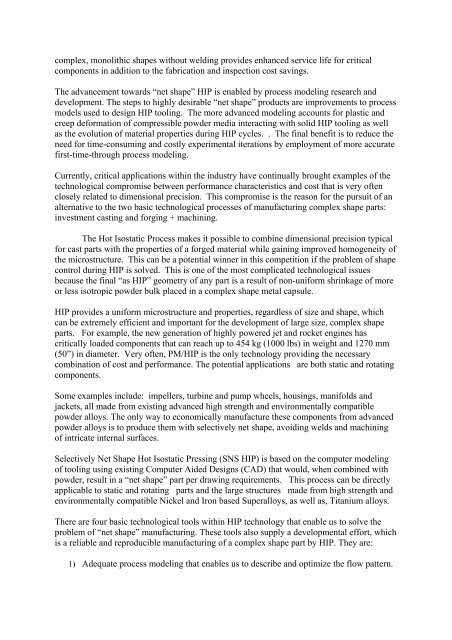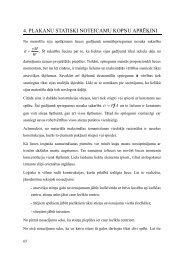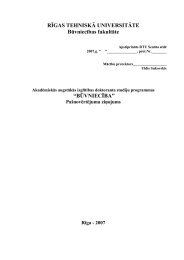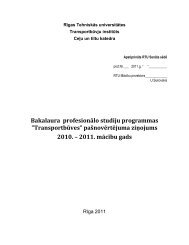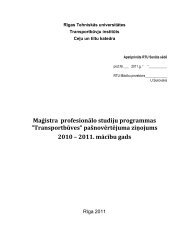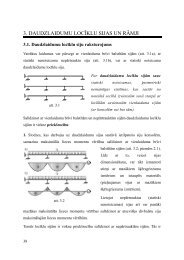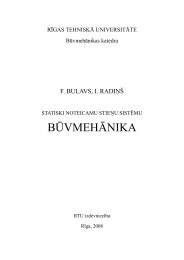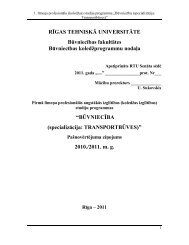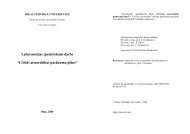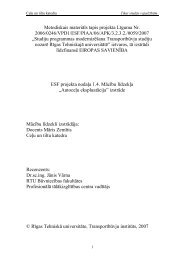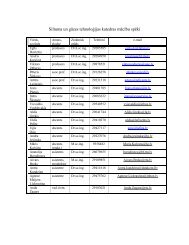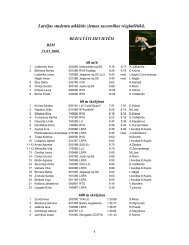âNet Shape HIP for complex shape PM parts as a cost-efficient ...
âNet Shape HIP for complex shape PM parts as a cost-efficient ...
âNet Shape HIP for complex shape PM parts as a cost-efficient ...
You also want an ePaper? Increase the reach of your titles
YUMPU automatically turns print PDFs into web optimized ePapers that Google loves.
<strong>complex</strong>, monolithic <strong>shape</strong>s without welding provides enhanced service life <strong>for</strong> critical<br />
components in addition to the fabrication and inspection <strong>cost</strong> savings.<br />
The advancement towards “net <strong>shape</strong>” <strong>HIP</strong> is enabled by process modeling research and<br />
development. The steps to highly desirable “net <strong>shape</strong>” products are improvements to process<br />
models used to design <strong>HIP</strong> tooling. The more advanced modeling accounts <strong>for</strong> pl<strong>as</strong>tic and<br />
creep de<strong>for</strong>mation of compressible powder media interacting with solid <strong>HIP</strong> tooling <strong>as</strong> well<br />
<strong>as</strong> the evolution of material properties during <strong>HIP</strong> cycles. . The final benefit is to reduce the<br />
need <strong>for</strong> time-consuming and <strong>cost</strong>ly experimental iterations by employment of more accurate<br />
first-time-through process modeling.<br />
Currently, critical applications within the industry have continually brought examples of the<br />
technological compromise between per<strong>for</strong>mance characteristics and <strong>cost</strong> that is very often<br />
closely related to dimensional precision. This compromise is the re<strong>as</strong>on <strong>for</strong> the pursuit of an<br />
alternative to the two b<strong>as</strong>ic technological processes of manufacturing <strong>complex</strong> <strong>shape</strong> <strong>parts</strong>:<br />
investment c<strong>as</strong>ting and <strong>for</strong>ging + machining.<br />
The Hot Isostatic Process makes it possible to combine dimensional precision typical<br />
<strong>for</strong> c<strong>as</strong>t <strong>parts</strong> with the properties of a <strong>for</strong>ged material while gaining improved homogeneity of<br />
the microstructure. This can be a potential winner in this competition if the problem of <strong>shape</strong><br />
control during <strong>HIP</strong> is solved. This is one of the most complicated technological issues<br />
because the final “<strong>as</strong> <strong>HIP</strong>” geometry of any part is a result of non-uni<strong>for</strong>m shrinkage of more<br />
or less isotropic powder bulk placed in a <strong>complex</strong> <strong>shape</strong> metal capsule.<br />
<strong>HIP</strong> provides a uni<strong>for</strong>m microstructure and properties, regardless of size and <strong>shape</strong>, which<br />
can be extremely <strong>efficient</strong> and important <strong>for</strong> the development of large size, <strong>complex</strong> <strong>shape</strong><br />
<strong>parts</strong>. For example, the new generation of highly powered jet and rocket engines h<strong>as</strong><br />
critically loaded components that can reach up to 454 kg (1000 lbs) in weight and 1270 mm<br />
(50”) in diameter. Very often, <strong>PM</strong>/<strong>HIP</strong> is the only technology providing the necessary<br />
combination of <strong>cost</strong> and per<strong>for</strong>mance. The potential applications are both static and rotating<br />
components.<br />
Some examples include: impellers, turbine and pump wheels, housings, manifolds and<br />
jackets, all made from existing advanced high strength and environmentally compatible<br />
powder alloys. The only way to economically manufacture these components from advanced<br />
powder alloys is to produce them with selectively net <strong>shape</strong>, avoiding welds and machining<br />
of intricate internal surfaces.<br />
Selectively Net <strong>Shape</strong> Hot Isostatic Pressing (SNS <strong>HIP</strong>) is b<strong>as</strong>ed on the computer modeling<br />
of tooling using existing Computer Aided Designs (CAD) that would, when combined with<br />
powder, result in a “net <strong>shape</strong>” part per drawing requirements. This process can be directly<br />
applicable to static and rotating <strong>parts</strong> and the large structures made from high strength and<br />
environmentally compatible Nickel and Iron b<strong>as</strong>ed Superalloys, <strong>as</strong> well <strong>as</strong>, Titanium alloys.<br />
There are four b<strong>as</strong>ic technological tools within <strong>HIP</strong> technology that enable us to solve the<br />
problem of “net <strong>shape</strong>” manufacturing. These tools also supply a developmental ef<strong>for</strong>t, which<br />
is a reliable and reproducible manufacturing of a <strong>complex</strong> <strong>shape</strong> part by <strong>HIP</strong>. They are:<br />
1) Adequate process modeling that enables us to describe and optimize the flow pattern.


